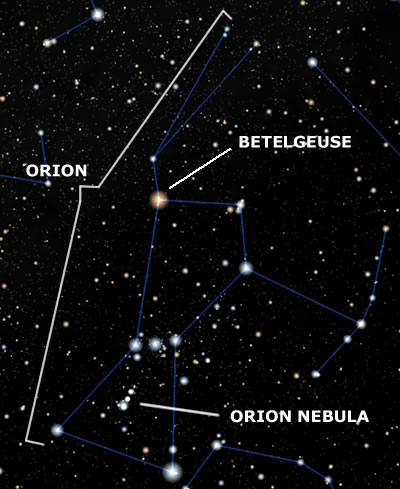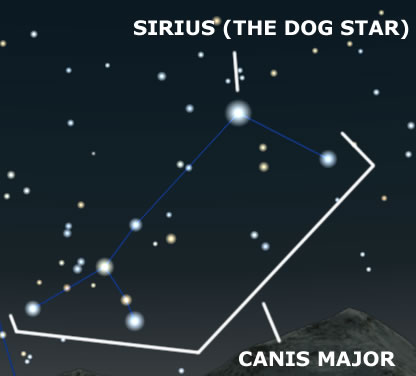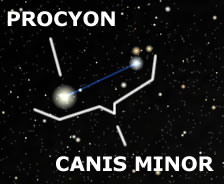Posts Tagged ‘star’
Eta Aquarids Meteor Shower 2013
For those of you who are very early risers in the morning, the Eta Aquarids Meteor Shower is for you! Unfortunately, for those of us who can’t get up in the morning we will probably miss this shower, as the best time to view these meteors is in the couple of hours before dawn. This is when the radiant of the meteor shower comes over our horizion in the Northern Hemisphere.
The good thing about this meteor shower is that you can see the meteors several days before the peak, which is on May 5th, and then for several days after. I believe the full timescale is from the 19th April until the 28th May, so they can be seen for over a month, if you are willing to get up in the morning! The number of meteors that should be seen each hour could peak at about 70 per hour if you are lucky, but you are more likely to see around 10-20 per hour in the Northern Hemisphere, with each meteor travelling at approx 66km/s. This year is actually a very good year to view the Eta Aquarids as the moon is only a waning crescent so will not make the sky too bright.
This meteor shower is called the Eta Aquarids as the radiant of the shower looks to emanate from the star Eta in the constellation of Aquarius. Aquarius is also known as the ‘Water Bearer’ and is shown in the image below. The meteors from this shower are actually dust and debris left behind from Halleys Comet, with this shower coming about due to the Earth passing through this orbital path of the Comet and thus ploughing straight through the path of debris
Lyrid Meteor Shower
This year the annual Lyrid Meteor Shower should be a great spectacle as the Moon will not be lighting up the sky at all. As long as you are out in the country and have the luck of a clear sky, there should be a perfect view of the meteors. Even in a lighter sky, it should be a good sight.
The height of the shower falls on the night of the 21st April with the average number of meteors spotted per hour being at about 10-20, but it has been known to reach up to 100 meteors per hour! On the nights around the peak night, you should still be able to see the occasional meteor. I had a look last night but unfortunately didn’t see any, mainly because the area of the sky where they seem to originate from (The constellation Lyra near the bright star called ‘Vega’.) was too low on the horizon and was hidden by trees.
The Lyrids are thought to be sand grain sized debris from a passing comet. When they hit the Earth’s atmosphere, they burn up, causing the light streaks in the Sky. In the past, fireballs have been seen hurtling across the sky during this meteor shower. They are thought to originate from comet Thatcher that has an orbit of 416 years with its path staying practically the same each time is passes through. This means the debris is always in the path of the Earth which is why it is an annual event.
So fingers crossed everyone gets to see a good few meteors! 😉
Orion Nebula, Sirius, Betelgeuse, Procyon and more
After several weeks of bad weather and tiredness due to busy work and a pregnant wife, I have been able to go out and view the Night Sky again.
A lot has changed since I last viewed the stars. Jupiter has now disappeared (from my viewing angle) and Orion has made its way along the night sky and is now settling in the South to South East area. The Plough has also come in to view and can be seen directly from my back garden towards the East.
The first thing I wanted to have a look at was the star Betelgeuse as Professor Brian Cox had said that it could turn into a Red Giant at any time. It would be amazing to see that happen in the sky and would be one of the highlights of my life. Unfortunately, the star was still looking the same through my binoculars and telescope, but I will keep checking it every clear night.
I also wanted to see if I could get a better view of the Orion Nebula which lies amidst the ‘Sword’ in the Orion Constellation. I had a look through my binoculars and telescope and could see a lot more than with the naked eye. What I could see was a blurry amount of light which is quite distinct compared with the rest of the space around it. It was exciting to be able to make this much out but I look forward to maybe getting a better look with a more powerful telescope when I can afford one. It was still a marvel to look at for me anyway.
Whilst I was looking at the Orion Nebula through the telescope, either a Satellite or a Meteor shot across the viewer. I’m not 100% sure what it was but it didn’t have any lights which can sometimes be seen on a satellite so I am leaning towards it being a meteor. It was so far away in the sky that it wouldn’t have been viewable by the naked eye. Perhaps someone can tell me what it was? I spotted it at about 8pm last night (24th March 2011).
There was one star in the sky that my wife and I always wondered what it was as it looked like a Helicopter or an Aeroplane suspended in the sky, with its lights flashing red and blue. After taking a closer look using our equipment and consulting the Internet, we found it to be Sirius (also known as the Dog Star and part of the constellation ‘Canis Major’). It is the brightest star in the sky and the red and blue twinkling that it gives off is due to its light hitting the atmosphere of the Earth and refracting in the gases. We are both glad that we now know what it is!
The final area of the Sky that I had wanted to take a look at was the bright star to the left of Orion. This star is called ‘Procyon’ and forms part of the constellation ‘Canis Minor’. This is also a very bright star, although obviously not as bright as Sirius. I couldn’t see much more detail through the telescope which was a shame, but at least I now know its name.
UFO or Mir Space Station
I hope someone can help me with this?
I was out at Mount Batten in Plymouth on the 8th January 2011 taking a look at the stars and sky when I noticed a light streaking across the sky. It was coming from a South Easterly direction, moving North Easterly, at a very fast rate. I could see it in the sky for a good 30 seconds until it got past the Moon and suddenly disappeared. I’m quite sure that it wasn’t a shooting star or a meteor as this seemed completely different, so i’m hoping someone knows what this may have been?
I did a bit of research afterwards and found that you can see the Mir Space Station in the sky on occasions and when the sun hits it, it looks like a bright light shooting across the sky. I’m not 100% convinced though.
Can anyone shed some light on this please?



